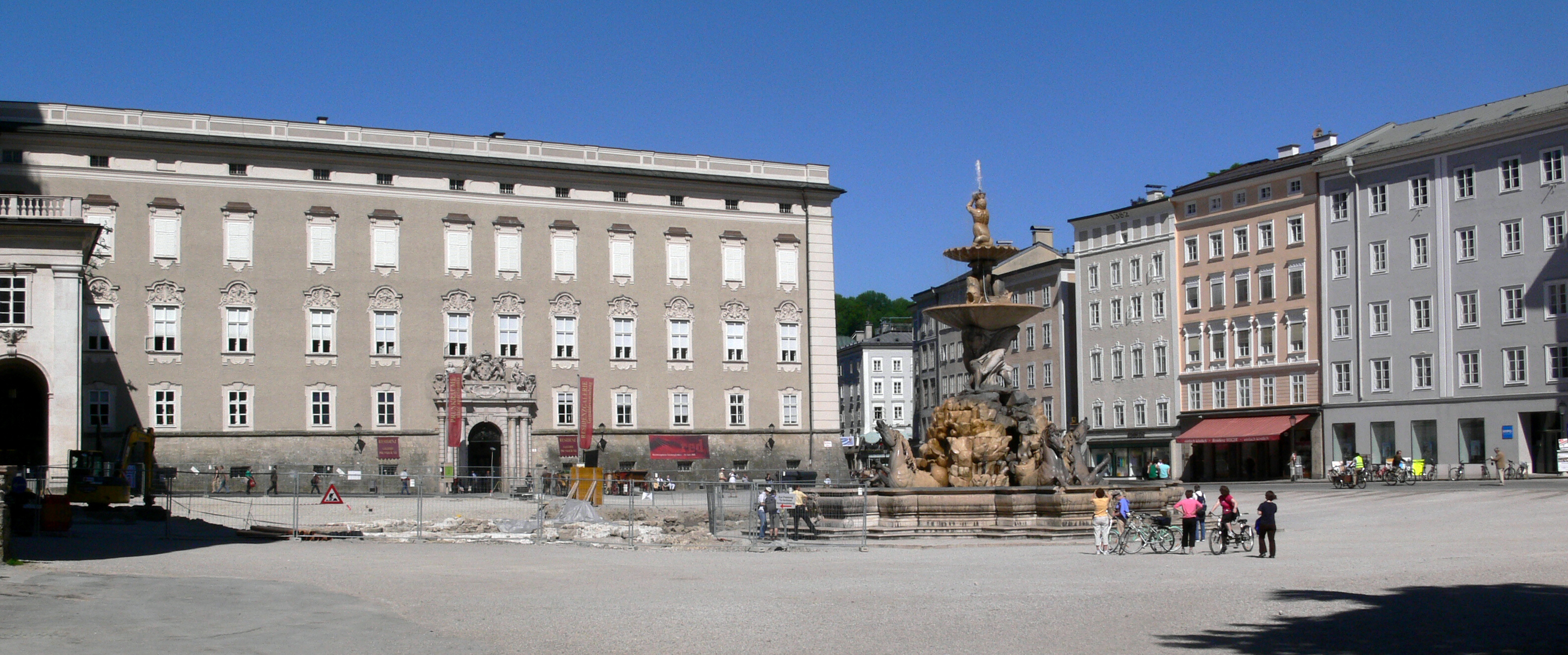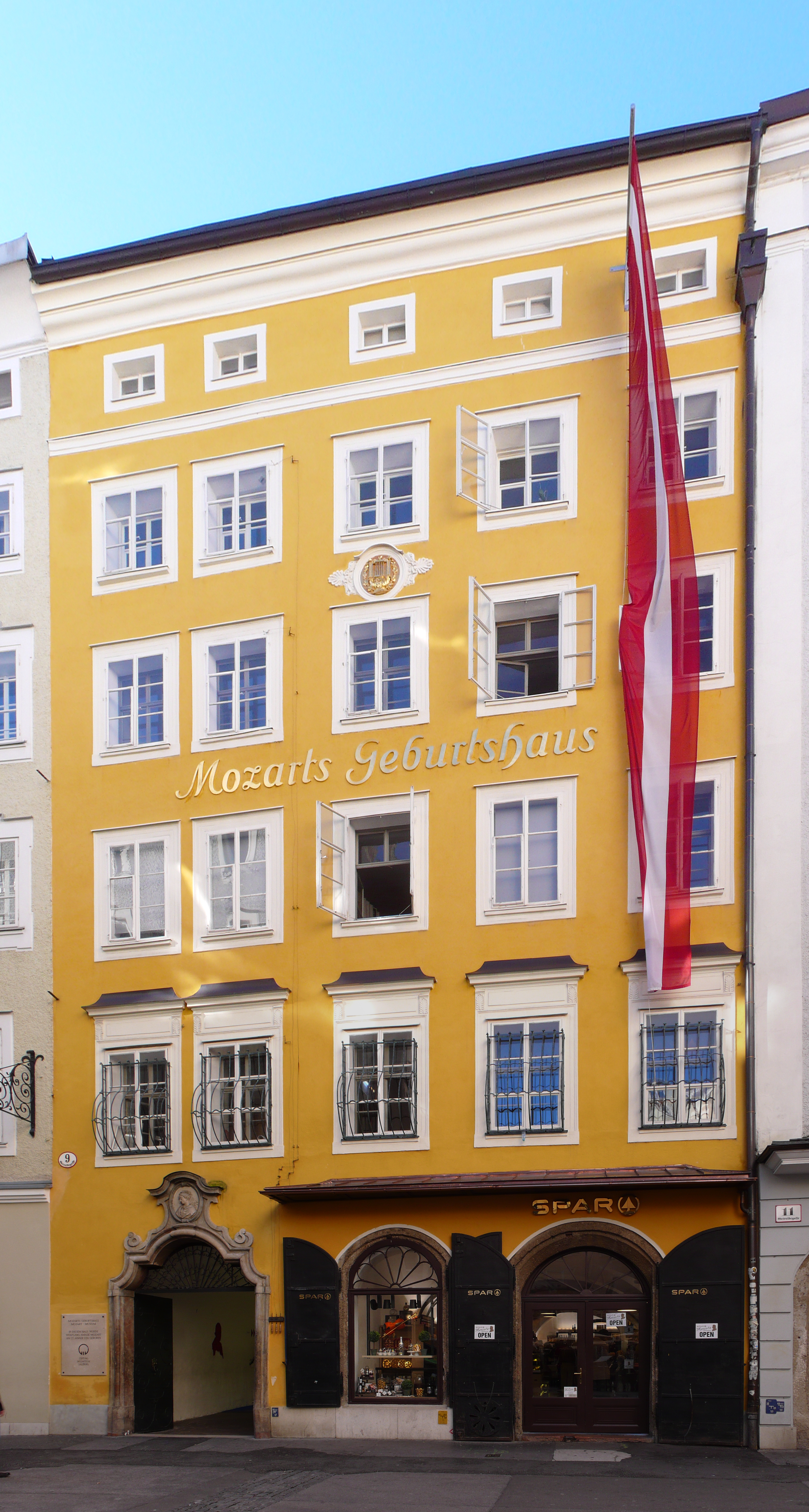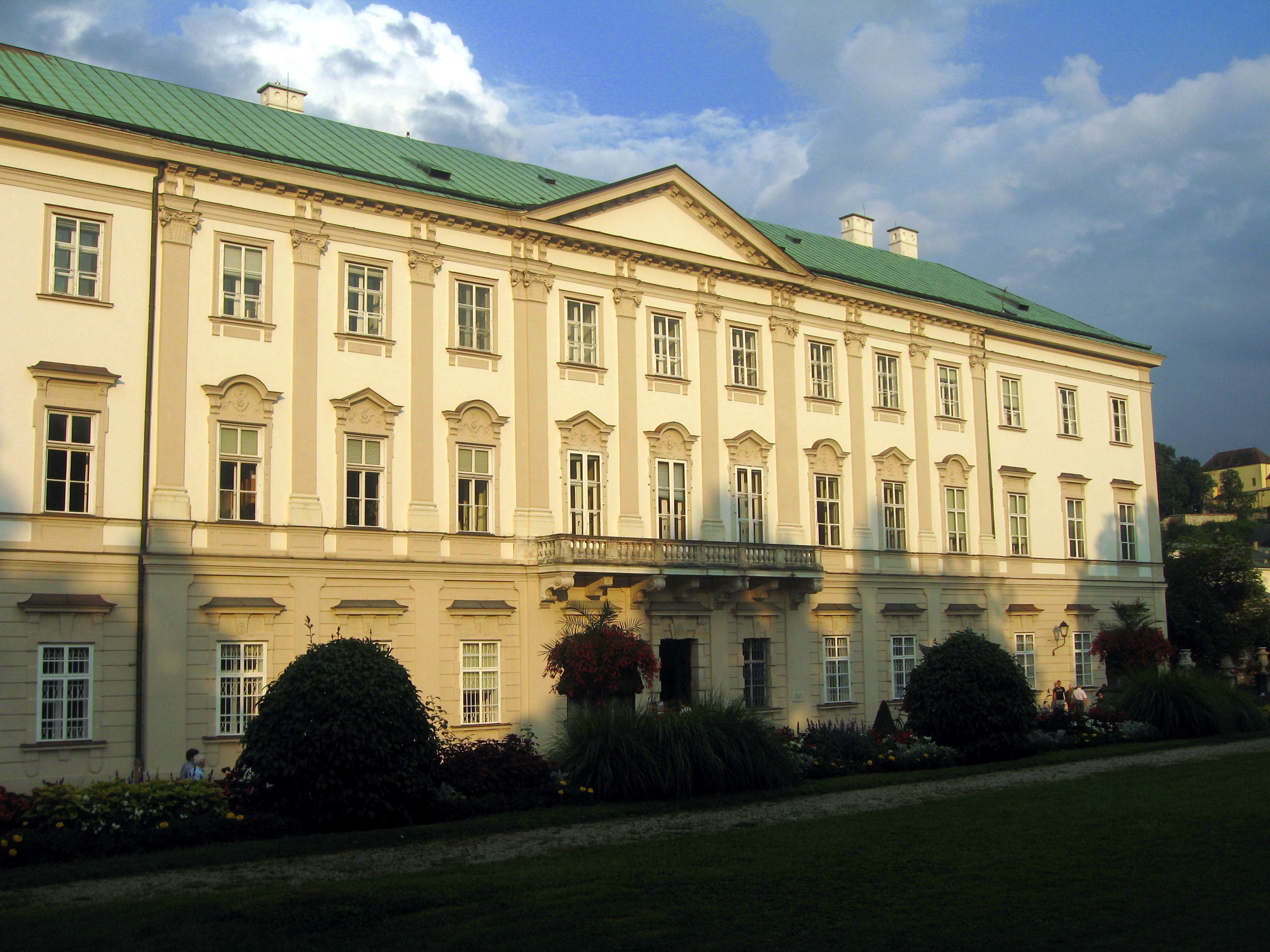|
Historic Centre Of The City Of Salzburg
The Historic Center of the City of Salzburg, also known as the Altstadt, is a district of Salzburg, Austria, recognized as UNESCO World Heritage Site since 1996. It corresponds with the historic city center, situated on the left and right banks of the Salzach river. The listing description is available under license CC-BY-SA IGO 3.0. The listing of the World Heritage Site describes it thus: "Salzburg has managed to preserve an extraordinarily rich urban fabric, developed over the period from the Middle Ages to the 19th century when it was a city-state ruled by a prince-archbishop. Its Flamboyant Gothic art attracted many craftsmen and artists before the city became even better known through the work of the Italian architects Vincenzo Scamozzi and Santini Solari, to whom the centre of Salzburg owes much of its Baroque appearance. This meeting-point of northern and southern Europe perhaps sparked the genius of Salzburg’s most famous son, Wolfgang Amadeus Mozart, whose name has been ... [...More Info...] [...Related Items...] OR: [Wikipedia] [Google] [Baidu] |
Salzburg (state)
Salzburg (, ; bar, Soizbuag, label=Bavarian language, Austro-Bavarian) (also known as ''Salzburgerland'') is a States of Austria, state (''Land'') of the modern Republic of Austria. It is officially named ''Land Salzburg'' to distinguish it from its eponymous capital — the city of Salzburg. For centuries, it was an independent Prince-Archbishopric of Salzburg, Prince-Bishopric of the Holy Roman Empire. Geography Location The state of Salzburg covers area of . It stretches along its main river — the Salzach – which rises in the Central Eastern Alps in the south to the Alpine foothills in the north. It is located in the north-west of Austria, close to the border with the Germany, German state of Bavaria; to the northeast lies the state of Upper Austria; to the east the state of Styria; to the south the states of Carinthia (state), Carinthia and Tyrol (state), Tyrol. With 529,085 inhabitants, it is one of the country's smaller states in terms of population. Running through th ... [...More Info...] [...Related Items...] OR: [Wikipedia] [Google] [Baidu] |
Hohensalzburg Fortress
Hohensalzburg Fortress (german: Festung Hohensalzburg, lit=High Salzburg Fortress) is a large medieval fortress in the city of Salzburg, Austria. It sits atop the Festungsberg at an altitude of 506 m. It was erected at the behest of the Prince-Archbishops of Salzburg. The fortress is long and wide making it one of the largest medieval castles in Europe. History Early history Construction of the fortress began in 1077 under Archbishop Gebhard von Helfenstein. The original design was a basic bailey with a wooden wall. In the Holy Roman Empire, the archbishops of Salzburg were already powerful political figures and they expanded the fortress to protect their interests. Helfenstein's conflict with Emperor Henry IV during the Investiture Controversy influenced the expansion of the fortress, with the Archbishop taking the side of Pope Gregory VII and the German anti-king Rudolf of Rheinfelden. The fortress was gradually expanded during the following centuries. The ring walls and t ... [...More Info...] [...Related Items...] OR: [Wikipedia] [Google] [Baidu] |
Salzburg Residenz
The Salzburg Residenz, also known as the Alte Residenz or Old Residence, is a palace located at Domplatz and '' Residenzplatz'' in the historic centre (''Altstadt'') of Salzburg, Austria. First mentioned about 1120, for centuries the Prince-Archbishops of Salzburg resided at the Residenz and used the palace to present and represent their political status. Today the Salzburg Residenz palace houses an art gallery, known as the '' Residenzgalerie'', and is one of the most impressive attractions in the city. The Residenz should not be confused with the nearby ' or New Residence, which is situated on the opposite side of ''Residenzplatz'' and houses the Salzburg Museum. History The earliest recorded reference to the bishop's palace was in a document dated around 1120. Construction began under Archbishop Conrad I, when he relocated his residence from St Peter's Abbey to its present site close to Salzburg Cathedral. In the sixteenth century, several changes and additions to the struct ... [...More Info...] [...Related Items...] OR: [Wikipedia] [Google] [Baidu] |
Benedictine
, image = Medalla San Benito.PNG , caption = Design on the obverse side of the Saint Benedict Medal , abbreviation = OSB , formation = , motto = (English: 'Pray and Work') , founder = Benedict of Nursia , founding_location = Subiaco Abbey , type = Catholic religious order , headquarters = Sant'Anselmo all'Aventino , num_members = 6,802 (3,419 priests) as of 2020 , leader_title = Abbot Primate , leader_name = Gregory Polan, OSB , main_organ = Benedictine Confederation , parent_organization = Catholic Church , website = The Benedictines, officially the Order of Saint Benedict ( la, Ordo Sancti Benedicti, abbreviated as OSB), are a monastic religious order of the Catholic Church following the Rule of Saint Benedict. They are also sometimes called the Black Monks, in reference to the colour of their religious habits. They ... [...More Info...] [...Related Items...] OR: [Wikipedia] [Google] [Baidu] |
Nonnberg Abbey
Nonnberg Abbey (german: Stift Nonnberg) is a Benedictine monastery in Salzburg, Austria. Founded by Saint Rupert of Salzburg, it is the oldest continuously existing nunnery in the German-speaking world. The monastery complex is today a protected monument and part of the Historic Centre of the City of Salzburg, a UNESCO World Heritage Site since 1996. History The convent was established beneath the Festungsberg hill and the ruined fortifications of the former Roman city of ''Juvavum''. Its first abbess was Saint Erentrudis of Salzburg, who was either a niece or a sister of Bishop Rupert. The abbey's endowment was provided by the Agilolfing duke Theodo of Bavaria and his successor Theodbert. The nuns, all of noble birth, held extended estates up the Salzach river in the south of the city. The convent's possessions were later augmented by Emperor Henry II, who was also Duke of Bavaria. The Benedictine rule was finally implemented under Archbishop Conrad I of Salzburg in the earl ... [...More Info...] [...Related Items...] OR: [Wikipedia] [Google] [Baidu] |
Mozart's Birthplace
Mozart's birthplace (German: or ) was the birthplace of Wolfgang Amadeus Mozart at No. 9 Getreidegasse in Salzburg, Austria. The Mozart family resided on the third floor from 1747 to 1773. Mozart himself was born here on 27 January 1756. He was the seventh child of Leopold Mozart, who was a musician of the Salzburg Royal Chamber. The museum depicts the early life of Wolfgang Amadeus Mozart, his first musical instruments, his friends, and his passionate interest in opera. The third floor exhibits Mozart's childhood violin as well as portraits, documents, and early editions of his music, and the second floor is devoted to Mozart's interest in opera and includes the clavichord on which he composed ''The Magic Flute''. The structure is owned by the Mozart Foundation. History The house was built in the 12th century on ground which had been part of the garden belonging to the Benedictine monks of St Peter's Abbey, Salzburg, St Peter's, Salzburg. Otto Keutzel, a merchant, is mentioned ... [...More Info...] [...Related Items...] OR: [Wikipedia] [Google] [Baidu] |
Wolfgang Amadeus Mozart
Wolfgang Amadeus Mozart (27 January 17565 December 1791), baptised as Joannes Chrysostomus Wolfgangus Theophilus Mozart, was a prolific and influential composer of the Classical period. Despite his short life, his rapid pace of composition resulted in more than 800 works of virtually every genre of his time. Many of these compositions are acknowledged as pinnacles of the symphonic, concertante, chamber, operatic, and choral repertoire. Mozart is widely regarded as among the greatest composers in the history of Western music, with his music admired for its "melodic beauty, its formal elegance and its richness of harmony and texture". Born in Salzburg, in the Holy Roman Empire, Mozart showed prodigious ability from his earliest childhood. Already competent on keyboard and violin, he composed from the age of five and performed before European royalty. His father took him on a grand tour of Europe and then three trips to Italy. At 17, he was a musician at the Salzburg court b ... [...More Info...] [...Related Items...] OR: [Wikipedia] [Google] [Baidu] |
Mozartplatz
''Mozartplatz'', formerly known as ''Michaelsplatz'', is a square in the historic centre (''Altstadt'') of Salzburg in Austria. In the centre of the square is a statue in memory of the composer Wolfgang Amadeus Mozart, who was born in the city and after whom the square is now named. The square was created by Prince-Archbishop Wolf Dietrich von Raitenau who ordered the demolition of a number of houses on this site in the early 17th century. Originally the centre-piece of the square was a baroque fountain with a statue of St. Michael, but this was removed in 1841 to make way for the statue of Mozart. On the north side of the square, the low ''Imhofstöckl'' houses the city's tourist information office. Behind the ''Imhofstöckl'' is part of the old city wall, which dates from the time of Prince-Archbishop Paris Lodron (1619-1653). Opposite, on the south side, is the ', home to the Salzburg Museum. On the east side of the square, three houses have a uniform facade and date from the ... [...More Info...] [...Related Items...] OR: [Wikipedia] [Google] [Baidu] |
Museum Der Moderne Salzburg
The Museum der Moderne Salzburg has two buildings at two different locations in Salzburg, Austria. The Rupertinum in the old town for new artistic concepts opened in 1983 and the Museum on the Mönchsberg for modern art in a contemporary setting opened in 2004. History The idea for the foundation of a collection and museum of modern art goes back to an initiative of Salzburg art dealer Friedrich Welz, who donated a large part of his private collection to the state of Salzburg. Owing to his personal friendship with Oskar Kokoschka the museum also received a great number of works from the Austrian expressionist. Museum der Moderne Rupertinum In 1983 the Rupertinum was opened as ''Salzburg Museum of Modern Art and Graphic Collection''. The museum's founding director Otto Breicha also integrated the ''Austrian Photographic Gallery'' into the museum, which has become the most important collection of contemporary Austrian photography. The Rupertinum, situated in the centre of the old ... [...More Info...] [...Related Items...] OR: [Wikipedia] [Google] [Baidu] |
Mirabell Palace
Mirabell Palace (german: Schloss Mirabell) is a historic building in the city of Salzburg, Austria. The palace with its gardens is a listed cultural heritage monument and part of the Historic Centre of the City of Salzburg UNESCO World Heritage Site. History The palace was built about 1606 on the shore of the Salzach river north of the medieval city walls, at the behest of Prince-Archbishop Wolf Dietrich Raitenau. The Archbishop suffered from gout and had a stroke the year before; to evade the narrow streets of the city, he decided to erect a pleasure palace for him and his mistress Salome Alt. Allegedly built within six months according to Italian and French models, it was initially named Schloss Altenau. When Raitenau was deposed and arrested at Hohensalzburg Castle in 1612, his successor Mark Sittich von Hohenems expelled Salome Alt and her family from the premises. Mark Sittich gave the palace its current name from it, mirabile, ''bella'': "amazing", "wonderful". It was r ... [...More Info...] [...Related Items...] OR: [Wikipedia] [Google] [Baidu] |
University Of Salzburg
The University of Salzburg (german: Universität Salzburg), also known as the Paris Lodron University of Salzburg (''Paris-Lodron-Universität Salzburg'', PLUS), is an Austrian public university A public university or public college is a university or college that is in owned by the state or receives significant public funds through a national or subnational government, as opposed to a private university. Whether a national universit ... in Salzburg municipality, Salzburg state, named after its founder, Prince-Archbishop Paris Lodron. Established in 1622, the university was closed in 1810 and re-established in 1962. Nowadays, it has around 18,000 students and 2,800 employees; it is the largest educational institution in Salzburg state. It is divided into six faculties: Catholic theology, Catholic Theology, Law and Economics, Cultural studies, Cultural Sciences, Social science, Social Sciences, Natural science, Natural Sciences, Analytical and Life Sciences. Benedictine ... [...More Info...] [...Related Items...] OR: [Wikipedia] [Google] [Baidu] |
Baroque Architecture
Baroque architecture is a highly decorative and theatrical style which appeared in Italy in the early 17th century and gradually spread across Europe. It was originally introduced by the Catholic Church, particularly by the Jesuits, as a means to combat the Reformation and the Protestant church with a new architecture that inspired surprise and awe. It reached its peak in the High Baroque (1625–1675), when it was used in churches and palaces in Italy, Spain, Portugal, France, Bavaria and Austria. In the Late Baroque period (1675–1750), it reached as far as Russia and the Spanish and Portuguese colonies in Latin America. About 1730, an even more elaborately decorative variant called Rococo appeared and flourished in Central Europe. Baroque architects took the basic elements of Renaissance architecture, including domes and colonnades, and made them higher, grander, more decorated, and more dramatic. The interior effects were often achieved with the use of ''quadratura'', or ... [...More Info...] [...Related Items...] OR: [Wikipedia] [Google] [Baidu] |





.jpg)

